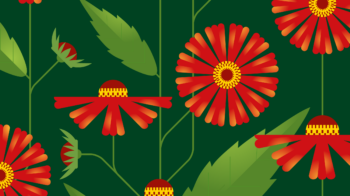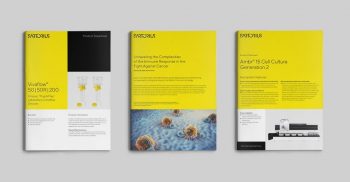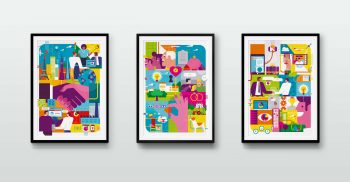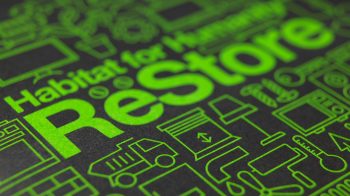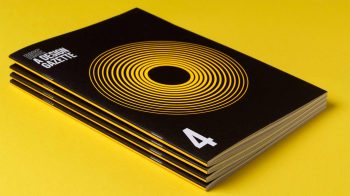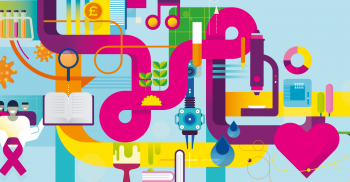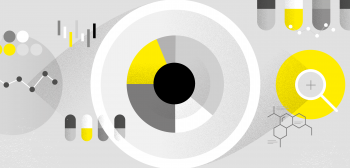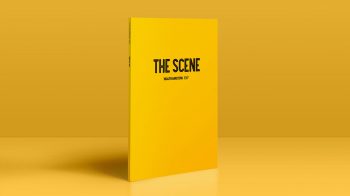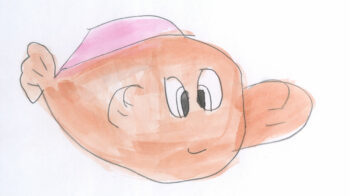The psychology of logo shapes
A logo is traditionally made from, or a combination of a name or wordmark, the brand icon and the strapline. They are the most visible and instant aspect of your branding, its ultimate distillation. From the high street to high finance and back, all those prominent shapes and combinations we see everyday are never, ever developed by chance and in this article we will look particularly at the informed use of shapes in the development of our brand icons.
Our subconscious minds respond in different ways to different shapes. Straight lines, circles, curves and jagged edges all imply different meanings and so a skilled logo designer can use shape to infer particular qualities about the brand. Think, for example, of the Nike Swoosh: the combination of curves ending in a sharp point offers a strong suggestion of movement. The Amazon smile, Dominoes box or Habitat heart.
This is because particular logo shapes send out particular and specific messages. Below we have considered some of the most common shapes and how designers use them to influence the emotions and reactions of customers.
Circles, ovals and ellipses
The circle is a universal symbol with extensive meaning. It represents the notions of totality, wholeness, original perfection and the self. As the sun, it is a masculine power; as the soul and as encircling waters, it is the feminine maternal principle. The circle is also zero in our system of numbering, and symbolizes potential, or the embryo.
The completeness of a circle suggests the unity, and harmony and in many cultures is the archetypical form representing the sun, the earth and the natural world. The BP logo features a green and yellow sunflower that forms a circular shape, epitomising energy in its various forms (and natural) forms. The shape is also thought to be a symbol of stability and collaboration. Logos that use rings for instance are designed to be welcoming, positive, and focused on a message of unity. The Olympic rings are a perfect example of circular logos, standing for cooperation, unity, and friendship.
Triangles
The triangle is one of the simplest and most fundamental geometric symbols. They represent dynamic tension and action and have a balance of energy and power that is often used as a symbol for law, science, and religion, most commonly as the holy trinity. Where squares (see below) are all about order and stability, triangles transmit power, strength and energy, and are often considered edgy depicting movement depending on where they point. CAT use a triangle to point upwards, to the road ahead, and The three ‘stripes’ of the Adidas logo come from their 3 striped shoe design, but also form the shape of a mountain, which represents the challenges athletes face.
The strength of triangles suggests masculinity, so it’s no coincidence that triangles feature more prominently in the logos of companies whose products have a masculine bias.
Squares and rectangles
According to the dictionary of symbolism, the square represents the earth, as opposed to the heavens; it is ‘geometric perfection, denoting honesty and straightforwardness, morality and integrity’. In design terms they deliver a combination of boldness and balance using right angles to represent order, mathematics, rationality, and formality. Rectangles are the most common geometric shape encountered and are often seen as a sign of security and confidence considering they are associated with objects like homes, safes, and boxes where things are kept.
As a financial organisation wanting to communicate security and trustworthiness American Express is the perfect example of a square logo while the BBC has one of the most recognisable square logo examples along with Lego and Microsoft.
Horizontal Lines
Horizontal lines are parallel to the horizon (hence the name). They look like they’re lying down, at rest, asleep. They suggest calm and quiet, stable and secure, a relaxed comfort. Like the horizon or the sight of firm land, horizontal lines are a grounding influence on a brand. By using layers of horizontal lines, AT&T’s logo, for instance, uses horizontal lines to create a globe that communicates interconnectedness.
Conversely, they can also represent dynamism and movement. Logistics companies may add horizontal lines to convey a sense of motion and speed, DHL for example. And
One of the most widely recognised logos in the world is the Paul Rand designed IBM icon which combines 8 horizontal stripes that reflect both speed and dynamism as well as balance.
Vertical Lines
Whereas horizontal lines tend to be related to calm, tranquility, and femininity, vertical lines communicate strength, power, and masculinity. Logos that use vertical lines prominently are bold and display a sense of strength and stability mixed in with a more aggressive approach.
Vertical lines are also versatile, as they can represent everything from the walls of a building to the edges of a rocket, and even create larger images when layered properly. It’s important to be careful when using vertical lines, as too many can make a brand seem domineering and overly aggressive which maybe why we have struggled to find any well known or indeed effective examples of them to share with you here!
Conclusion
Strong logos deliver both attention and recognition. The best are appropriate for your brand and relevant to your audience, carry a simple but clear message, are distinctive in market, and practical, to use and replicate. And choosing the right shape is a vital step in the process of creating a great logo.
The fact is that shapes are all around us, we see them and through them feel and react everyday. They are capable of conveying the most basic but also the broadest of ideas, expressions and moods and fixing such distinctive and memorable points in our subconscious.
It is through such an appreciation of the psychology behind shapes that you and your creative team will be able to build and develop a stronger, more relevant and effective brand.

